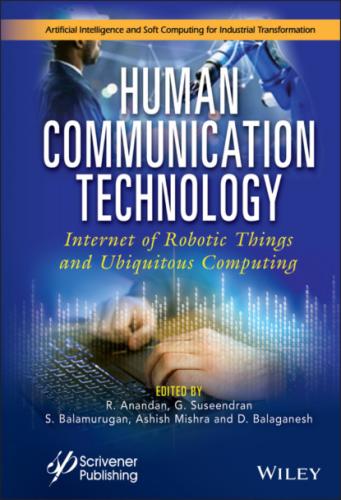Table of Contents
1 Cover
4 Preface
5 1 Internet of Robotic Things: A New Architecture and Platform 1.1 Introduction 1.2 Platforms 1.3 Conclusion 1.4 Future Work References
6 2 Brain–Computer Interface Using Electroencephalographic Signals for the Internet of Robotic Things 2.1 Introduction 2.2 Electroencephalography Signal Acquisition Methods 2.3 Electroencephalography Signal-Based BCI 2.4 IoRT-Based Hardware for BCI 2.5 Software Setup for IoRT 2.6 Results and Discussions 2.7 Conclusion References
7 3 Automated Verification and Validation of IoRT Systems 3.1 Introduction 3.2 Program Analysis of IoRT Applications 3.3 Formal Verification of IoRT Systems 3.4 Validation of IoRT Systems 3.5 Automated Validation References
8 4 Light Fidelity (Li-Fi) Technology: The Future Man–Machine–Machine Interaction Medium 4.1 Introduction 4.2 Literature Survey 4.3 Light Fidelity Technology 4.4 Li-Fi Applications in Real Word Scenario 4.5 Conclusion References
9 5 Healthcare Management-Predictive Analysis (IoRT) 5.1 Introduction 5.2 Related Work 5.3 Fuzzy Time Interval Sequential Pattern (FTISPAM) 5.4 Detection of Congestive Heart Failure Using Automatic Classifier 5.5 Experimental Analysis 5.6 Conclusion References
10 6 Multimodal Context-Sensitive Human Communication Interaction System Using Artificial Intelligence-Based Human-Centered Computing 6.1 Introduction 6.2 Literature Survey 6.3 Proposed Model 6.4 Experimental Results 6.5 Conclusion 6.6 Future Scope References
11 7 AI, Planning and Control Algorithms for IoRT Systems 7.1 Introduction 7.2 General Architecture of IoRT 7.3 Artificial Intelligence in IoRT Systems 7.4 Control Algorithms and Procedures for IoRT Systems 7.5 Application of IoRT in Different Fields References
12 8 Enhancements in Communication Protocols That Powered IoRT 8.1 Introduction 8.2 IoRT Communication Architecture 8.3 Bridging Robotics and IoT 8.4 Robot as a Node in IoT 8.5 Robots as Edge Device in IoT 8.6 Challenges and Research Solutions 8.7 Open Platforms for IoRT Applications 8.8 Industrial Drive for Interoperability 8.9 Conclusion References
13 9 Real Time Hazardous Gas Classification and Management System Using Artificial Neural Networks 9.1 Introduction
